Happy New Year to you and yours! It is the start of a new year and New Year's Day found Kev @kev07713 and I meeting up at RSPB Otmoor for a wander round early doors. I had to be back by lunchtime for my daughter finishing her shift at work, while Kev could stay later and so we travelled separately. Once on the reserve we saw many of the usual species and kicked off our year lists with 51 species, Kev adding a couple more along the bridleway and Roman Road. Nothing of particular note and no outstanding photos
The following day Alan Boddington reported seven waxwings at the main entrance gate to Brandon Marsh near Coventry. They were reported at 9.51am and I was on the road about an hour later. On the way the roads were wet but as I turned down Brandon Lane the road was completely under water - a car was at the other end of the ‘puddle’ wondering what to do. In fact it was easily passable for now and so I drove through carefully and turned down for the reserve, stopping to see if I could locate the waxwings in the rain. None.
I checked WhatsApp to find a message "Final Waxwing total before they flew was 12". Damn. I made for the Visitor's Centre to see if there was any news - no one else around. They were closing the Centre before the roads became impassable - on my way out I added jay to my year list as two flew over. My first dip of the year - I'm sure there will be more. On the way home, just outside Marton, two puddles had almost met in the centre of the road but now on the way back they had joined, and the water was now almost 9 or 10 inches deep - fed from water coming down the slope on the right. In many ways going home now might be the best thing that could have happened – it is possible the road could be closed.
Wednesday saw us driving to Scotland to see my mum and brothers - an extra week off work. With reports of white-tailed eagle on Hunterston Sands on Boxing Day I'd asked my mum to keep it there until I arrived - hopefully I'd find something in the area. When we arrived, I looked on Birdguides to see what had been reported and over a late lunch up popped a glaucous gull on the pool by Auchenharvie Golf Course and then on the roof at Dunbia Highland Meats. The light was dropping as we checked into our hotel and so there was no point going now.
The following morning sunrise would be almost 08.50am and so it was after breakfast before we set off, arriving at Stevenston Point. With guillemots, razorbill, a raft of very distant common scoters, a red-throated diver and more on the water there were a few good birds but all very distant. As I scanned on my scope another birder arrived, and I asked if he'd been to Saltcoats - the glaucous gull had been reported not long before. He confirmed that it was he that had posted the sighting and confirmed the bird was back on the roof of the factory. Charlotte and I packed up and made for Saltcoats - a glaucous gull would be a lifer.
We parked at Auchenharvie Golf Course and while Charlotte stayed in the car, I walked down the path to the meat factory and met another birder scanning the pond and then the roof of the factory. I joined in and we worked along the roof but couldn't locate our bird - the other chap said that he was going down to Ardrossan harbour to tick purple sandpipers for his year list but would return and perhaps the bird would be back.
I walked further along the path to find there were more roofs and within a couple of minutes had spotted the glaucous gull. I excitedly dropped my scope on the tarmac of the factory car park and was quickly approached by a security guard that asked me to return to the perimeter of the site - only reasonable. As I repositioned the gull dropped onto the ground and it was then I could see quite how big it was! - a very large (the second biggest gull in the world), pale gull - up to 77 cm in length and can span 170 - 182 cm across the wings.
Adults are mostly white with a very pale grey back; pure white wingtips. Juveniles (as this one) are white or pale tan with light brown markings and again no black on the wingtips. It breeds in the High Arctic, winters farther south in a variety of habitats - rarely far from a large body of water - and often seen mixed with flocks of other large gulls. They eat virtually anything, from small rodents to seabirds to starfish, as well as fruit, insects, carrion, and rubbish - here it was hanging around the abattoir/processing facility looking for scraps - to be fair, there were a significant number of gulls doing the same.
The glaucous gull returned to the roof and occasionally flew a circuit around the facility. It was interesting to see the bird against the other species (often thought to be large themselves).
Another birder turned up to take photos and we had a nice chat as we watched - he mentioned that there was a reliable spot in Saltcoats for purple sandpipers, one of my target birds along this stretch of the coastline. Once we'd had our fill I headed back to the car and announced to Charlotte that I wanted to make one more stop - we made our way along to the area suggested but in the short time I had I didn't locate any sandpipers. I did have great views of a seal basking on the water's edge. Ringing records show that purple sandpipers are remarkably faithful to wintering sites, with individuals returning to the exact same stretch of coast year after year; they'd likely be here somewhere.
Back at my mum's house rather a lovely mistle thrush rested in top of one of the fence posts, with song thrushes keeping it company.
The next morning we had breakfast and I asked we return to Saltcoats - I'd had some conversations with some locals on social media and they'd clarified where I should be for the sandpipers. On arrival a turnstone fed on the grass between the beach and the children’s play area, but I wasn't stopping here - my quarry lay elsewhere. I walked to the pools I'd been directed to and immediately saw the sandpipers I was looking for, feeding with redshank and turnstones. The common name refers to a seldom-seen purple sheen on some of the wing feathers. I started taking some photos as they worked up and down the channels and water's edge getting what I hoped were nice shots. The six birds nimbly explored seaweed-covered rocks as they search for mussels, crustaceans, and flies, flashing bright orange on the legs and bill.
Suddenly one of the birds hopped onto a wall, ran directly at me, and jumped down in the closest pool almost as if it was posing - what a great experience. As quickly as it had chosen to entertain, it turned and flew away to the remaining flock.
I returned to the car and Charlotte and made for Stevenston Point to see what might be there. Another (different) seal watched on.
I set up my scope and scanned, standing nearby another birder. Out on the water there was a red-throated diver, several pairs of red-breasted mergansers and distant sanderling feeding along the water's edge. Ringed plover, dunlin, turnstone, and a handful of purple sandpipers fed on top of the pier structure out into the water. A single razorbill and a couple of black guillemots caught my attention - the common scoters were absent.
We were approached by another birder that had been viewing further back along the Point and had seen a single Mediterranean gull, and a dozen or so knot - both had since vanished. He did say that locals had just reported that the white-tailed eagle had just been seen along at Hunterston Sands. This was an opportunity not to be missed - we said our goodbyes and set off.
The white-tailed eagle is an international conservation success story. These superb birds became extinct in Britain in the early 1900s but are now living here again after a re-introduction programme that brought chicks over from Norway to the island of Rum, one of Scotland’s wildest places. Since then, they’ve established other colonies, and have even started nesting in the Lowlands on Loch Leven in Fife. In Norway, white tailed and golden eagles will share the same territory, but in Scotland the two species establish separate ranges. Schedule 1 protection means it is illegal to disturb this species.
They eat largely fish, but also take various birds, rabbits, and hares. Carrion is an important part of their diet, especially during the winter months. Most lambs are taken as carrion. When fishing, they fly low over water, stop to hover for a moment and drop to snatch fish from the surface. During the breeding season while they are rearing young, they require 500-600 grams of food per day, but this drops to 200-300g per day during the winter months when the birds are less active.
When we arrived, we found the eagle on the rocks and just as far away as it could be. Not needing much food it seemed content and in no rush to move. Several birders were already there and had been for some time - discussions centred around whether the rising tide might push the eagle skywards. As we waited, a couple of dog walkers appeared on the righthand edge of the sandbar and walked left with their golden labrador. It took a while for them to approach the eagle as they stopped frequently to take landscape photos of the bay - we wondered if this might provoke the bird to depart its resting place. Slowly slowly the couple and their dog approached and damn me, the bird gave them a cursory look and stayed put - more amazingly the couple just walked by as if they hadn't seen it. The dog didn't stop, and the eagle didn't appear to feel threatened.
Once the walkers had passed, I looked at the time and decided I'd need to get back to meet with mum and my brother - no flight shots today.
We'd tried for the dipper in our usual spot on Seamill beach without success and this lack of success continued through our final morning. Charlotte and I ventured down on the beach and south towards Ardrossan, seeing a kingfisher resting in the rocks, and then both rock and meadow pipits. There was a lot of early fog and we were surprised to see people out in kayaks. Eventually this cleared leaving a 40m bank of fog on the sea to the north.
We turned to return to the car and on to my mum's and spotted ringed plovers on the rocks, razorbill and eider on the water, and then two purple sandpipers on the water's edge. A terrific morning despite connecting with our dipper.
< div class="separator" style="clear: both;">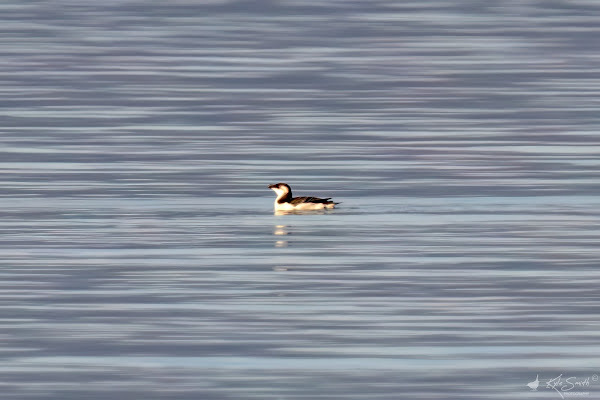

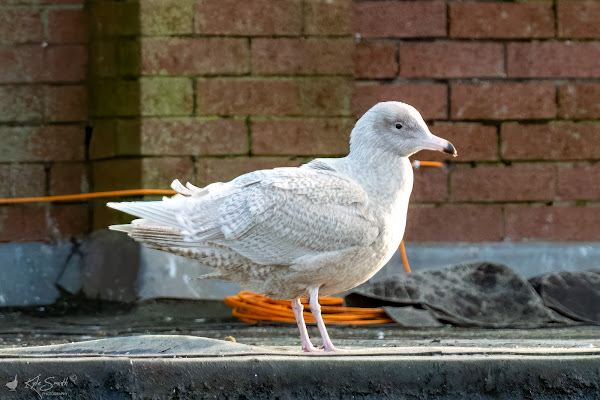

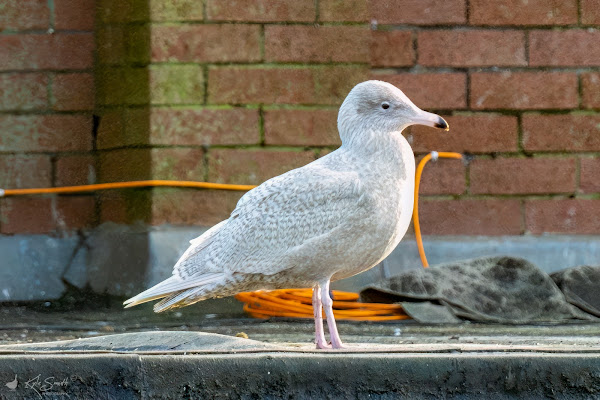



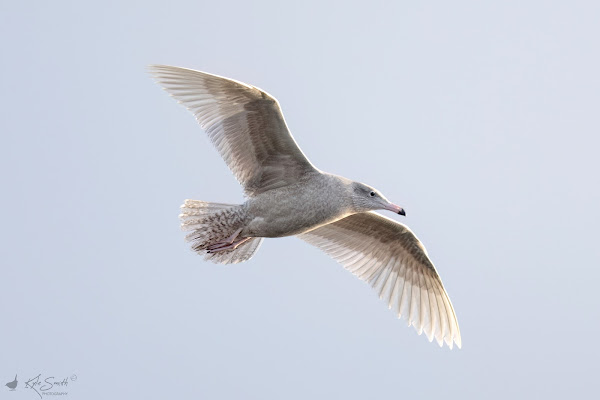


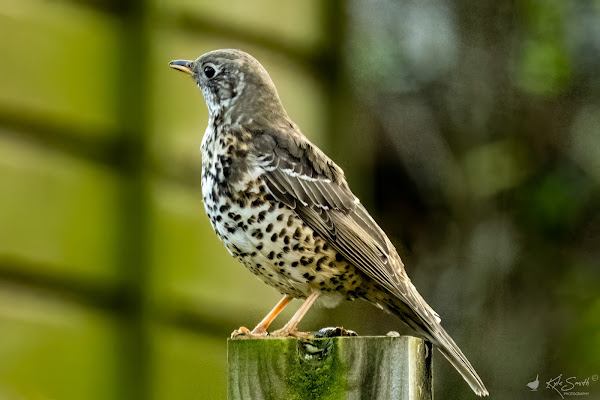



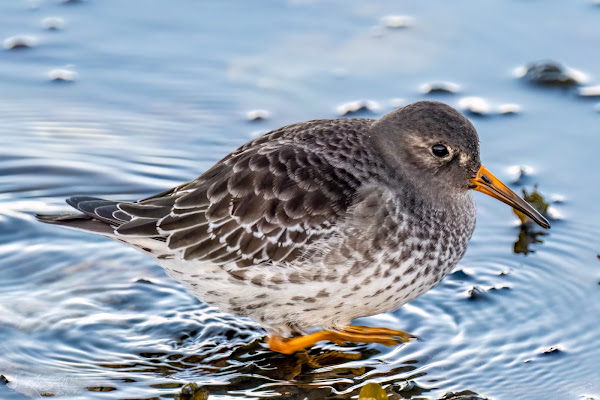
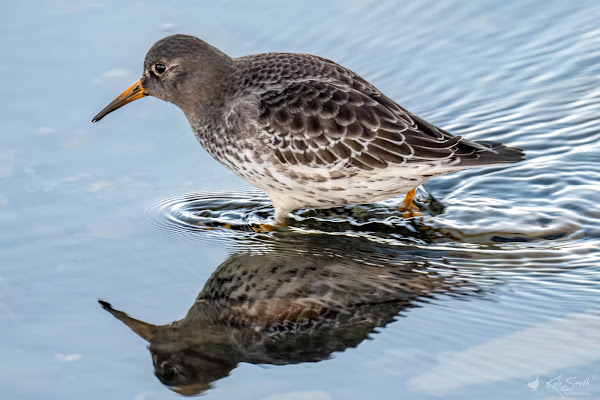




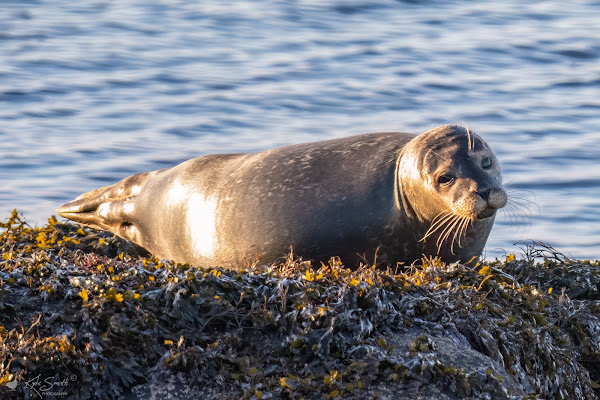
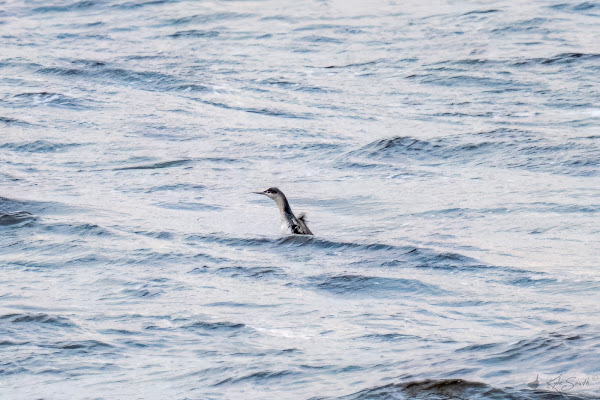

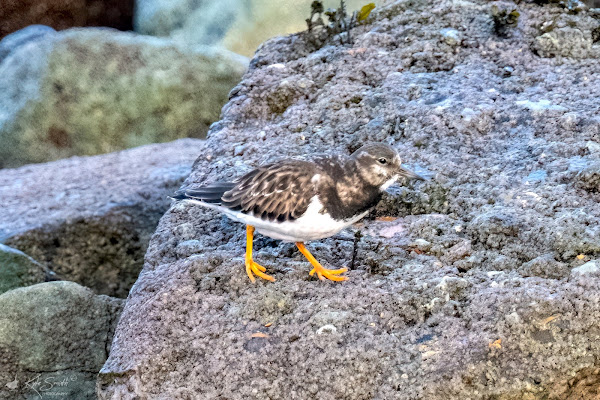
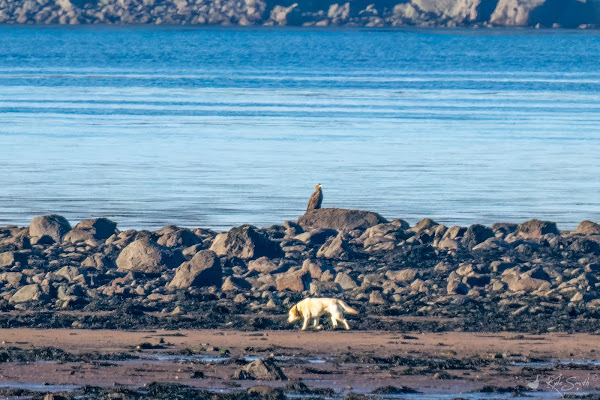
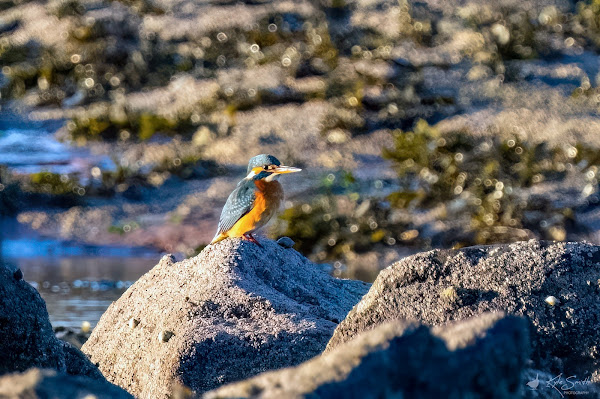


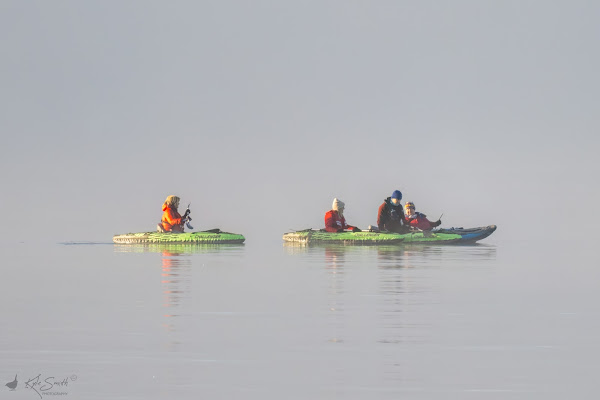



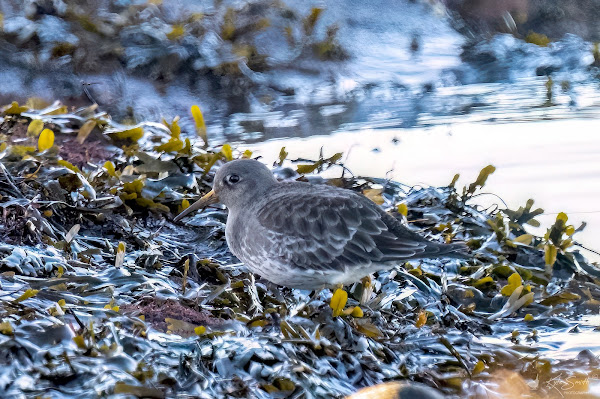
No comments:
Post a Comment